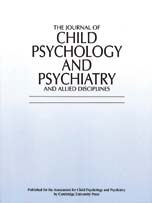Children and Adolescents Living with HIV and AIDS: A Review
Published online by Cambridge University Press: 01 January 2000
Abstract
Worldwide, more than one million children are infected with human immunodeficiency virus (HIV) and in the United States it has become the sixth leading cause of death among 15–24-year-olds. Despite the trend of increasing rates of infection, advances in therapies have led to survival past 5 years of age for more than 65% of infected children. This global health threat will therefore continue to have a significant impact on child and adolescent psychiatry and psychology. This paper reviews current studies and reports on the consequences of the acquired immunodeficiency syndrome (AIDS) epidemic in the psychiatric care and development of children and adolescents infected by HIV. From a search of all the English-language-based literature on pediatric AIDS, 140 studies are reviewed which address HIV infection and its psychological and social implications. Several topics of mental health significance are examined: (1) the epidemiology of HIV, (2) neurocognitive development among those infected, (3) psychological impact of infection, and (4) the family and social context of HIV. The transition of HIV from an acute, lethal disease to a subacute, chronic disease has enormous implications for the neurocognitive and psychosocial development of children and families. As children and adolescents infected with HIV continue to live longer, normal developmental milestones and educational needs will take on new significance. Many children will continue to be adversely impacted by non-HIV factors such as poverty, inadequate medical services, and a lack of social support. This review outlines recent developments that hold promise to effectively reduce the treatment burden on the infected, their families, and health care providers and to decrease the incidence of transmission to the uninfected.
Keywords
- Type
- Research Article
- Information
- The Journal of Child Psychology and Psychiatry and Allied Disciplines , Volume 41 , Issue 1 , January 2000 , pp. 81 - 96
- Copyright
- © 2000 Association for Child Psychology and Psychiatry
- 145
- Cited by


